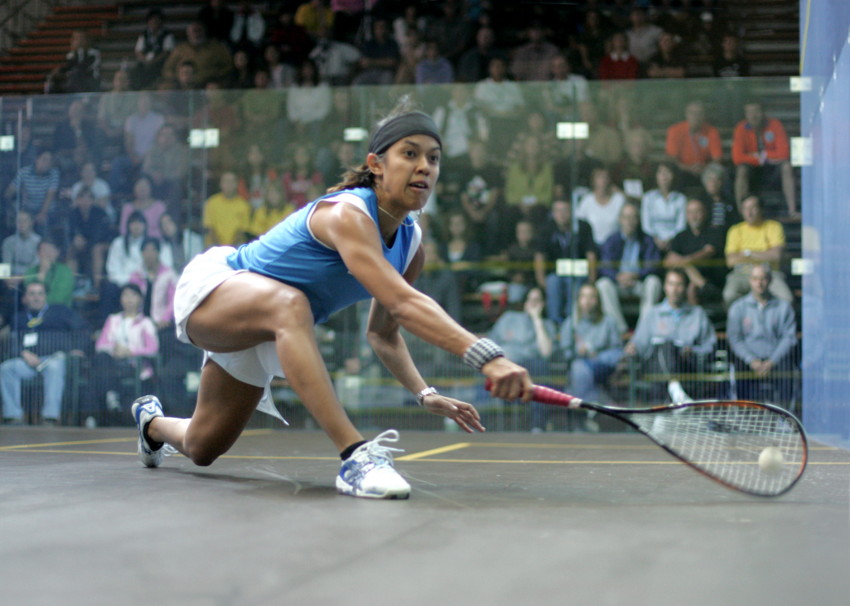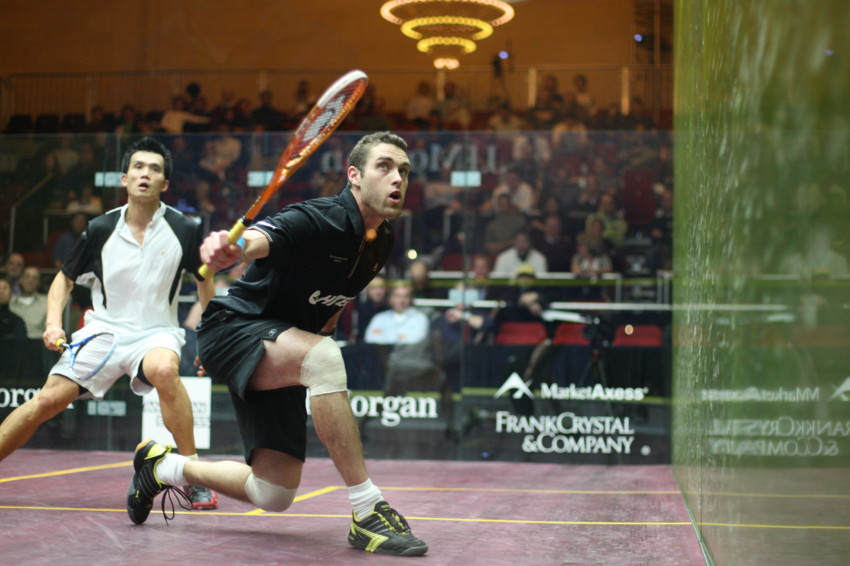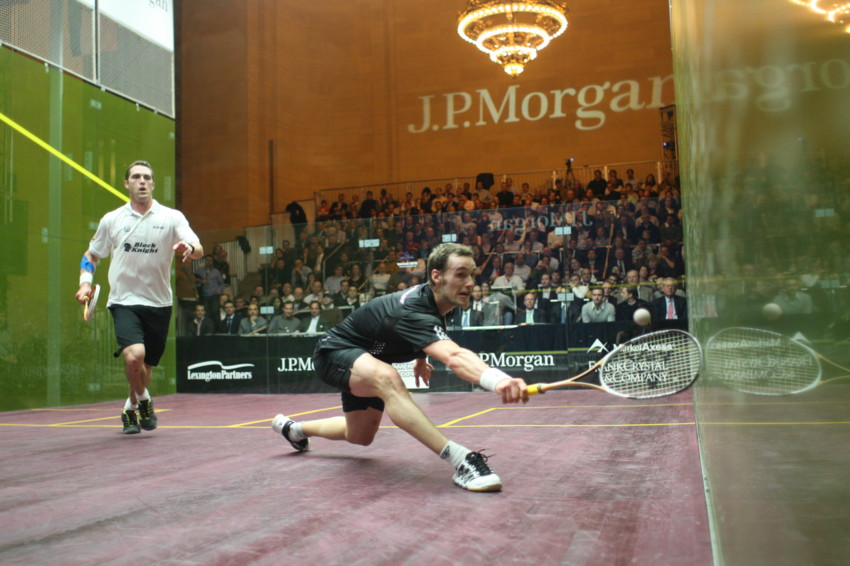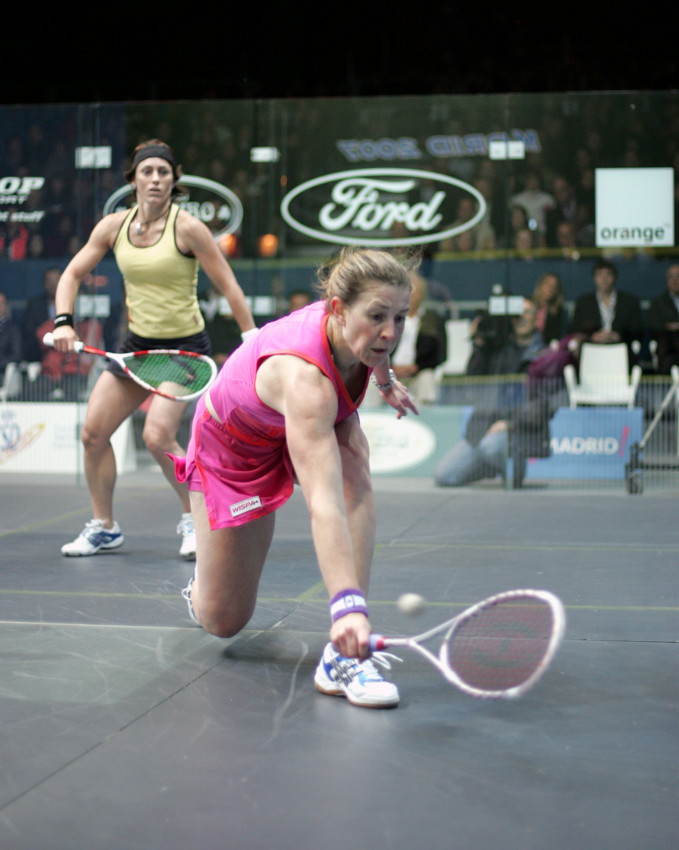
By Damon Leedale-Brown, Sports Scientist & Conditioning Specialist
In the last issue we discussed ideas for a balanced summer training program, with one of the key areas being functional strength and mobility training for squash.
Squash imposes significant movement challenges on a player. As you are covering relatively short distances on a squash court, developing and controlling speed is a key factor in moving quickly and efficiently around the court. To accelerate quickly off the mark as you leave the ‘T Zone’ requires the ability to develop high levels of force in a short space of time. The bigger challenge for many players comes in the slowing or stopping of movement (deceleration phase) as they approach a ball, particularly in the front corners of the court. It is not uncommon to see players collapsing and essentially falling through the shot at the front of the court. This is normally an indication that they lack the strength and mobility to get into a strong lunge position, and cannot generate force quickly enough from the required areas of the body to control (or resist) their forward momentum onto the ball.
 Chronic and acute injuries on the squash court typically occur in these deceleration or stopping phases of movement, and it is easy to see why when you watch players collapsing into the shot and imagine the stress this is placing on certain parts of the body. I have seen too many junior players who at a young age have already had fairly serious injuries including: major tears of hamstring, adductor and hip flexor muscles; lower back problems such as bulging or herniated discs and stress fractures; and chronic tendonitis issues with the knee. Though having good levels of both strength and mobility cannot guarantee against injury, it definitely goes a long way to reduce the potential for acute and chronic injuries especially in young developing athletes.
Chronic and acute injuries on the squash court typically occur in these deceleration or stopping phases of movement, and it is easy to see why when you watch players collapsing into the shot and imagine the stress this is placing on certain parts of the body. I have seen too many junior players who at a young age have already had fairly serious injuries including: major tears of hamstring, adductor and hip flexor muscles; lower back problems such as bulging or herniated discs and stress fractures; and chronic tendonitis issues with the knee. Though having good levels of both strength and mobility cannot guarantee against injury, it definitely goes a long way to reduce the potential for acute and chronic injuries especially in young developing athletes.
Clearly then it is important for a squash player to have good strength and mobility both in terms of injury prevention and body health, and to help enhance performance on the court. A strong and mobile player will be able to move more freely, with little effort and with great control of their body. This helps them create strong and balanced positions on the ball leading to improvements in accuracy and consistency. Moving with more efficiency on court helps conserve energy, so there is an interesting relationship between strength and endurance in squash. A stronger player has more control of their body which effectively eliminates wasted or unnecessary movements. Every movement takes less out of them physically which is a key factor in being able to sustain a high movement tempo throughout a long hard match.
 If you have watched matches involving the top players in the world they seem to make it look so easy the way they move around with balance, strength and control even under extremely high levels of pressure. There are many great examples of current players who display phenomenal strength in their movement such as Thierry Lincou, David Palmer, Nicol David and Natalie Grainger to name a few. This is credit to their dedication to training and the years of work taken to really prepare and develop their bodies to be able to cope with such a physically demanding movement sport at the highest level. Every player I worked with on the England National program, whether at Junior or Senior level, had a structured and progressive strength training program which, in key training phases, they would perform two to three times a week
If you have watched matches involving the top players in the world they seem to make it look so easy the way they move around with balance, strength and control even under extremely high levels of pressure. There are many great examples of current players who display phenomenal strength in their movement such as Thierry Lincou, David Palmer, Nicol David and Natalie Grainger to name a few. This is credit to their dedication to training and the years of work taken to really prepare and develop their bodies to be able to cope with such a physically demanding movement sport at the highest level. Every player I worked with on the England National program, whether at Junior or Senior level, had a structured and progressive strength training program which, in key training phases, they would perform two to three times a week
So how do we train safely and smartly to improve strength, while at the same time maintaining mobility and balance in the body? Over the coming issues we will look more closely at specific exercise techniques and programs that can help you become a stronger and more balanced squash player, and at the same time dispel some of the myths of strength training and concerns that players, coaches and parents often have.





